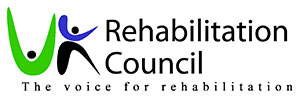Frequently asked questions
The UKRC has been established to cover the whole of the United Kingdom (England, Scotland, Wales and Northern Ireland).
The UKRC has a wide membership base including organisations and individuals from the health, insurance, third sector, private, legal and academic fields.
The UKRC relies on funding from grants, government funding initiatives and sponsorship. Our move towards a membership organisation will provide a small, but steady funding stream to cover some of the UKRC’s administration and running costs. We seek out initiatives that meet our values and strategic aims to fund specific pieces of work, such as the Rehabilitation Standards which were funded by the Department for Work and Pensions (DWP). We successfully applied for 3-year funding in 2008 under the Department of Health’s Third Sector Investment Programme.
The current 15 Council Members are representative of all sectors involved in or with an interest in rehabilitation. The Council’s “bye-laws” allow it to elect up to 15 members and co-opt 5 members to fill any positions that may be required for specific tasks or to cover a particular expertise.
The UK Rehabilitation Council is a community of rehabilitation associations, rehabilitation providers, clients and other stakeholder groups that provide a single voice for clinical and vocational rehabilitation in the UK. Our common goal is to ensure access to high quality medical and vocational rehabilitation services in the UK. The Council acts as an effective advocate for best practices, and supports excellence in services that will help sick and injured people, where possible, regain their independence and return to work.
The Rehabilitation Standards are intended for use by commissioners and users of rehabilitation services to help them choose the most appropriate providers of these services.
The UKRC Rehabilitation Standards illustrate the hallmarks of a good provider of rehabilitation services, and will assist potential users in making informed choices when selecting quality rehabilitation providers. The two accompanying Guides, one for purchasers and the other for consumers, provide support with making those choices.
